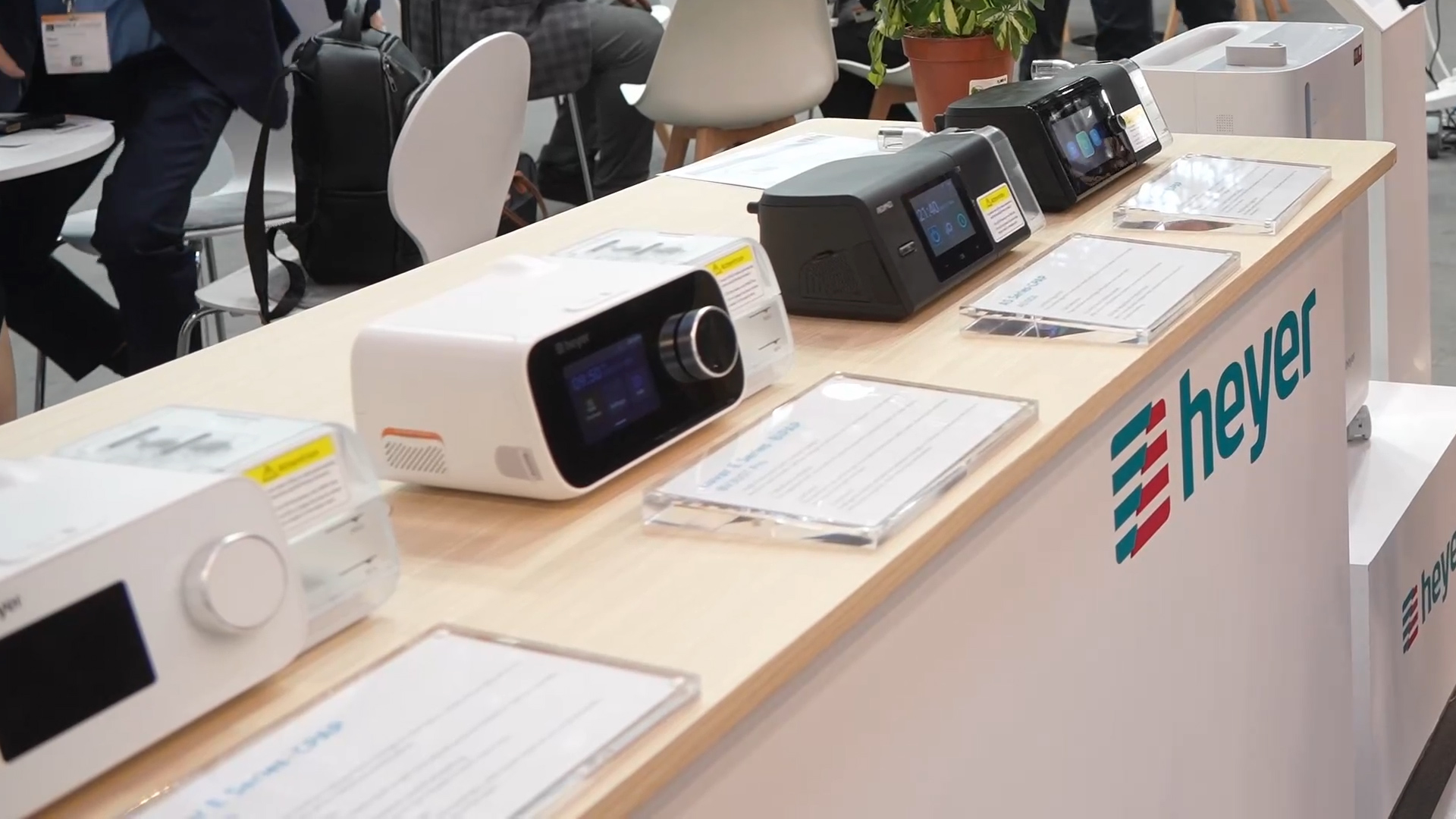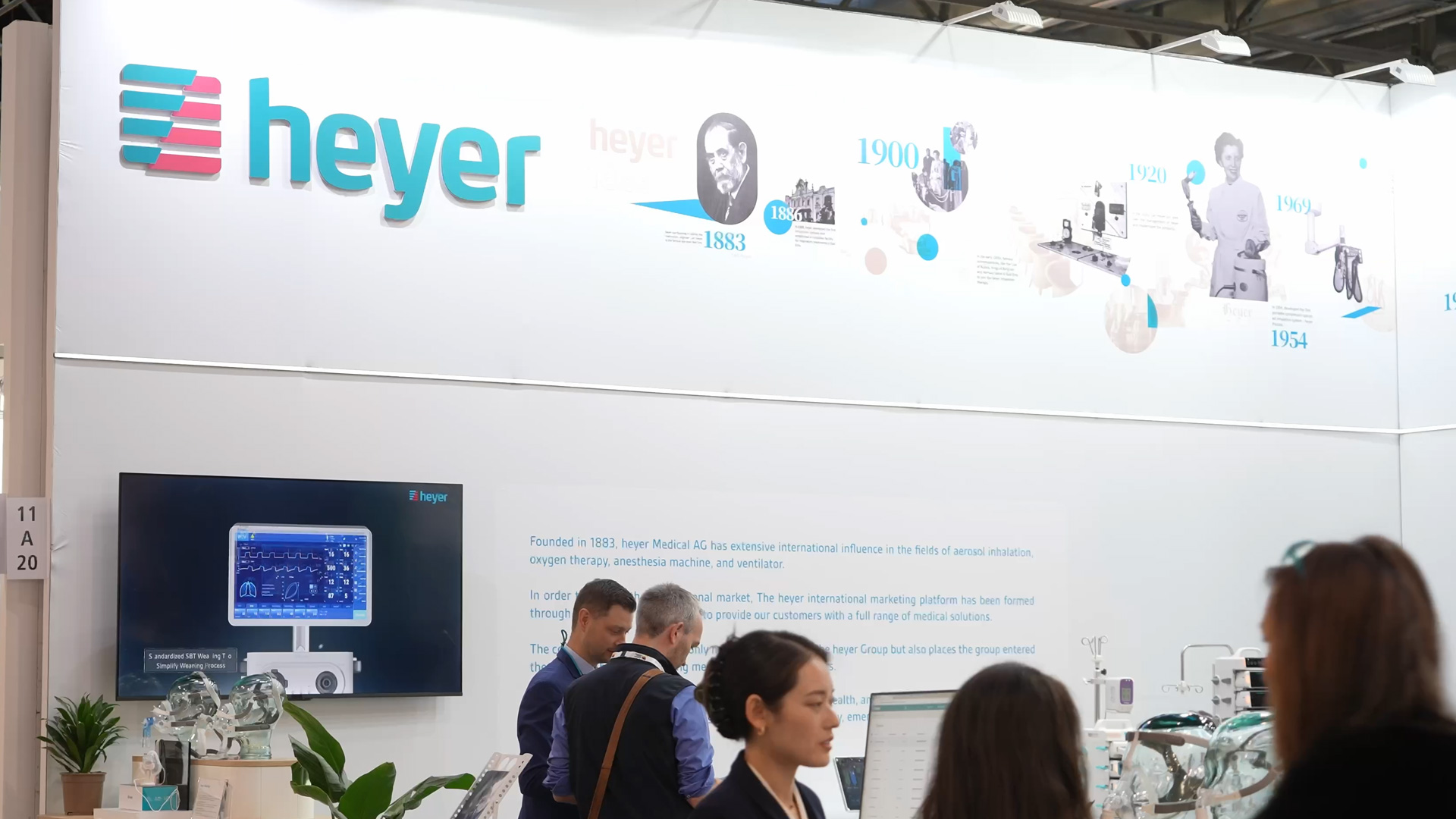At Medica, Heyer is showcasing a selection of sleep apnea therapy devices that offer flexible application options and a high level of comfort. The focus is on a therapy system that not only works reliably from a medical point of view, but also has as little impact as possible on nighttime sleep. From mask fit and pressure control to noise levels, the entire design is based on personal requirements determined in the sleep laboratory.
The models serve the same therapeutic purpose, but differ in their design. The range allows for adaptation to different degrees of severity and individual needs. While some patients require automatic pressure adjustment, others depend on more precise forms of control. The variety of devices addresses these differences and combines clinical specifications with home use. The therapy should provide support without reinforcing the feeling of technical intervention.

One focus is on the correct fit of the mask, as this is crucial for the success of the therapy. The mouth and nose area must be covered in such a way that there are no uncomfortable pressure points and even breathing remains possible. Whether a nasal mask is sufficient or a full-face mask is necessary is determined in the sleep laboratory. The goal is a smooth transition between the waking and sleeping phases. Drafts, audible pressure surges, or irregular breathing could interfere with falling asleep—which is why the mask is so important.
There are two technical concepts to choose from: APAP, in which the air pressure is automatically regulated, and BiLevel, in which the inhalation and exhalation pressures are set separately. Both variants provide needs-based respiratory support without the risk of overbreathing or the feeling of an unpleasant counterflow. A comparison with pressure fluctuations in closed rooms shows the kind of irritation that should be avoided. The devices should work unobtrusively, supporting rather than dominating.

Heated tubes are one of the important comfort features of current systems. They prevent dry breathing air, as is known from compressed air systems, for example, and help to ensure that mucous membranes are not irritated. Warmer and more humid breathing air is perceived as significantly more pleasant, especially over longer periods of therapy. For Heyer, this concept of comfort is directly related to the objective: reliable technology that works in the background and fulfills its purpose without disturbing a good night's sleep.